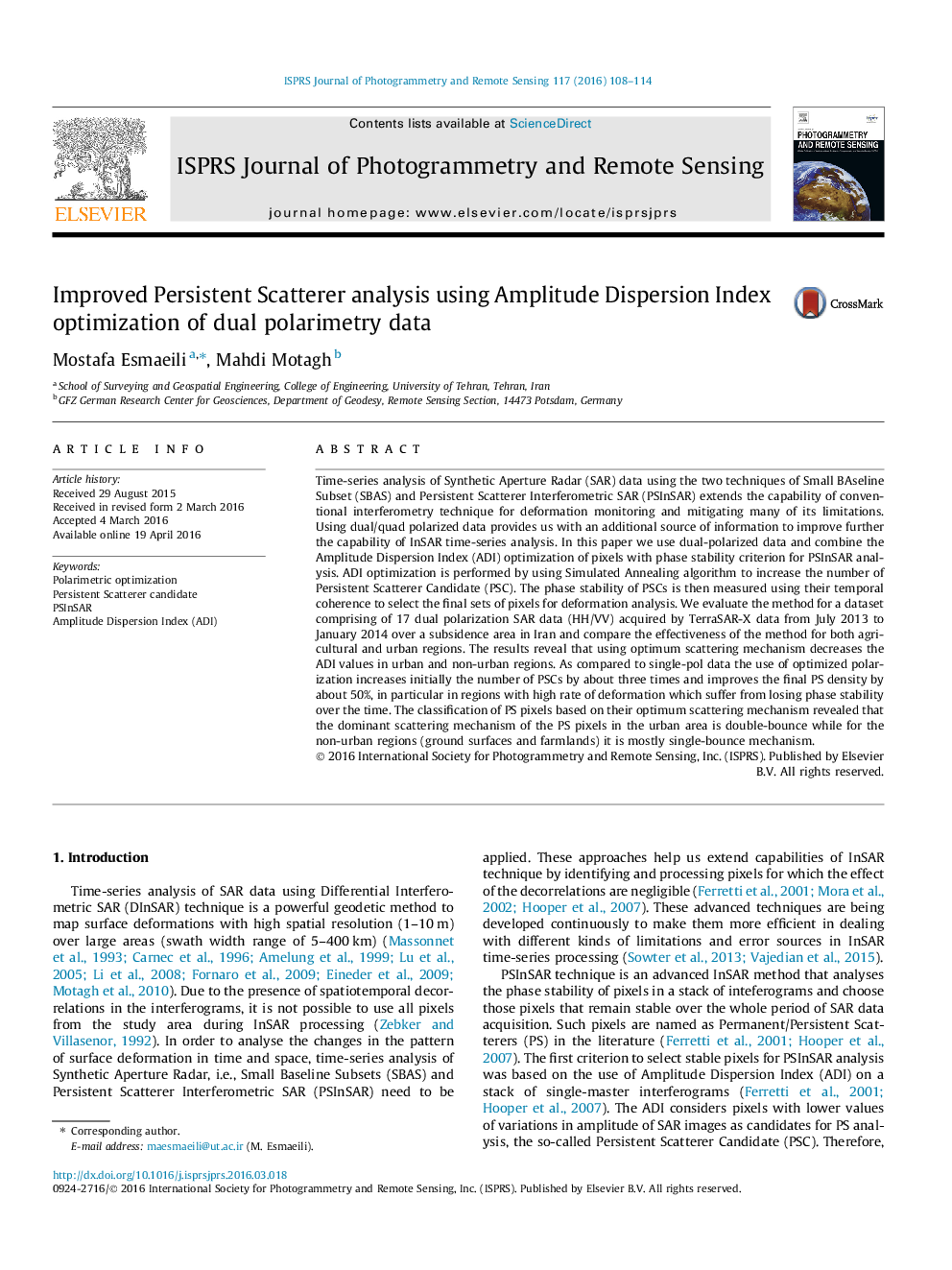| کد مقاله | کد نشریه | سال انتشار | مقاله انگلیسی | نسخه تمام متن |
|---|---|---|---|---|
| 554918 | 1451257 | 2016 | 7 صفحه PDF | دانلود رایگان |
Time-series analysis of Synthetic Aperture Radar (SAR) data using the two techniques of Small BAseline Subset (SBAS) and Persistent Scatterer Interferometric SAR (PSInSAR) extends the capability of conventional interferometry technique for deformation monitoring and mitigating many of its limitations. Using dual/quad polarized data provides us with an additional source of information to improve further the capability of InSAR time-series analysis. In this paper we use dual-polarized data and combine the Amplitude Dispersion Index (ADI) optimization of pixels with phase stability criterion for PSInSAR analysis. ADI optimization is performed by using Simulated Annealing algorithm to increase the number of Persistent Scatterer Candidate (PSC). The phase stability of PSCs is then measured using their temporal coherence to select the final sets of pixels for deformation analysis. We evaluate the method for a dataset comprising of 17 dual polarization SAR data (HH/VV) acquired by TerraSAR-X data from July 2013 to January 2014 over a subsidence area in Iran and compare the effectiveness of the method for both agricultural and urban regions. The results reveal that using optimum scattering mechanism decreases the ADI values in urban and non-urban regions. As compared to single-pol data the use of optimized polarization increases initially the number of PSCs by about three times and improves the final PS density by about 50%, in particular in regions with high rate of deformation which suffer from losing phase stability over the time. The classification of PS pixels based on their optimum scattering mechanism revealed that the dominant scattering mechanism of the PS pixels in the urban area is double-bounce while for the non-urban regions (ground surfaces and farmlands) it is mostly single-bounce mechanism.
Figure optionsDownload high-quality image (369 K)Download as PowerPoint slide
Journal: ISPRS Journal of Photogrammetry and Remote Sensing - Volume 117, July 2016, Pages 108–114
